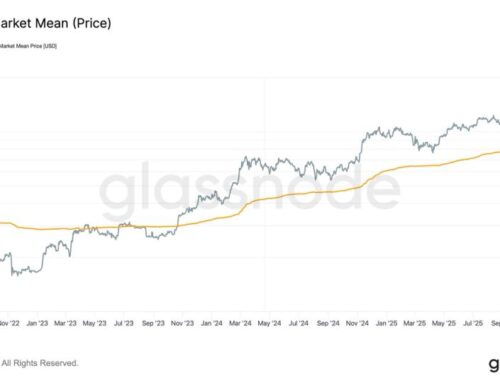How historic is what we’re seeing in the Queensland floods? It’s hard to grasp the full ma
April 5, 2025
When Dorothea Mackellar wrote of flooding rains more than a century ago, she couldn’t have anticipated anything on the scale of the current deluge in Queensland.
The downpour, which began as a lingering low pressure trough topped up by rain from ex-tropical cyclone Dianne, has dumped a phenomenal amount of water on to outback towns and cities, inundating homes, cutting access to communities and causing stock losses in excess of 150,000.
The resulting floods – the boom in the boom-bust cycle that characterises this arid landscape – have filled dryland rivers and expanded across wide and flat plains, reaching a scale not seen since European colonisation.
How exceptional was the flooding?
Griffith University professor Fran Sheldon, a river ecologist specialising in dryland river systems, says the floods were “massive” and “probably at the extreme end of the boom”.
“It’s covering flood plain areas that haven’t been inundated in European memory,” she says, although evidence from soils and fish genetics suggest floods of this scale have happened before.
Inland flood waters are expected to take weeks, or even months, to move downstream into South Australia, towards Kati Thanda–Lake Eyre.
Kati Thanda’s river catchment spans 1.2m square kilometres – more than a seventh of the Australian landmass – including parts of Queensland, South Australia, the Northern Territory and New South Wales. Rainfall and river flows are extremely variable, fluctuating between long dry periods and sporadic rainfall.
According to flood gauges, the enormous body of water has surpassed the 1974 event, widely considered the largest flood in Queensland history. But it was still sitting within the floodplain, Sheldon says, just “reaching the edges” of where people thought it would go.
This was a natural phenomenon, Sheldon says, even though the devastation experienced by towns and communities was awful.
“The beauty of these river systems is that they are some of the last unregulated rivers in the world. What we’re witnessing is just rivers being rivers. There are no big dams on these systems. There’s no massive irrigation industry. So this is just what big rivers do.”
So much water, where did it all come from?
About two weeks ago, heavy and relentless rain started falling across normally dry inland areas of Queensland, as a slow-moving trough dragged tropical moisture inland.
The skies briefly cleared this week before the remnants of ex-Tropical Cyclone Dianne brought further rain to already sodden areas.
Rainfall records have tumbled across the state.
According to the Bureau of Meteorology, broad areas of western Queensland received up to four times their March average rainfall. In four days – from 23 to 26 March – parts of southern and south-western Queensland had more than their annual average rainfall.
The airport at Winton, Australia’s dinosaur capital, recorded 158mm on 26 March, 56mm higher than the previous daily rainfall record for March. A day later, 177mm fell at Dillalah station, off the Mitchell Highway about 700km west of Brisbane, breaking its record by 31mm. The pastoral lease received so much rain throughout March – 417mm in total – it nearly doubled its monthly rain record.
The bureau said the Paroo, Bulloo, Cooper and Thomson catchments recorded their biggest floods in 50 years.
The lingering trough, together with ex-tropical cyclone Alfred resulted in the state’s third wettest March.
Dr Andrew King, an associate professor in climate science at the University of Melbourne, says when low pressure systems drew air down from the north, it tended to be warm and moist, creating perfect conditions for heavy rainfall.
Flooding in northern Australia during the wet season isn’t uncommon, he says , although it is unusual to see multiple exceptional flooding events.
While winds generally move weather systems across the country, King says sometimes low pressure systems linger and get “kind of stuck in place for a while”, if there is a high pressure system nearby. “If the systems hang around for long enough, then the flooding tends to be worse.”
There isn’t yet conclusive evidence about whether climate change is contributing to these stationary events, he says, although it is something researchers are looking into.
Climate change is increasing the amount of moisture the air can hold, which can lead to heavier rainfall.
Could we have been more prepared?
Dr John Macintosh, a water engineer and former National Committee on Water Engineering of Engineers Australia chair, says that in inland rural Australia, infrastructure like dams, levees or diversions do little to reduce the impact when such huge volumes of water are involved.
More moisture in the atmosphere created the conditions for higher rainfall, which could spread further across a flat landscape, he says.
“More volume of water … means we’ve got greater areas that have been impacted,” Macintosh says, all amplified by growing populations, farming and industrial activities.
Governments are improving their disaster management capabilities, but he says more early warning and monitoring systems will reduce potential flood damage. Engineers can help, he says, by drawing on rainfall, flood gauge and river flow data and using mapping to better forecast the expected timing and depth of flood events.
Where to from here?
Most of the water currently sitting over Cooper creek and the Georgina, Diamantina river systems will eventually make its way into Kati Thanda–Lake Eyre.
The “great big creeping mass of water” is moving at a walking pace, Sheldon says. But once it reaches Kati Thanda – in weeks or months – it will probably fill the lake, a rare event that only occurs a few times each century. “We’re looking at something pretty unique,” she says.
As the floodwaters progress, wetting soils and filling up rivers and wetlands, nutrients and invertebrates will provide a ready food source for fish and waterbirds.
“A lot of those floodplain soils contain eggs of small invertebrates, the zooplankton that hatch when they get wet. There’s an instant boom of this incredible food source for fish, and they’ll just be out there feasting and growing and breeding again and making the most of it.”
When the water finally reaches its destination, brine shrimp would hatch from the salty sediment providing food for millions of waterbirds.
“It’s not just Kati Thanda that will boom. All these wetlands will be covered in water birds and be covered in fish and be booming as well,” she says. “It’ll be spectacular.”
Search
RECENT PRESS RELEASES
Related Post




